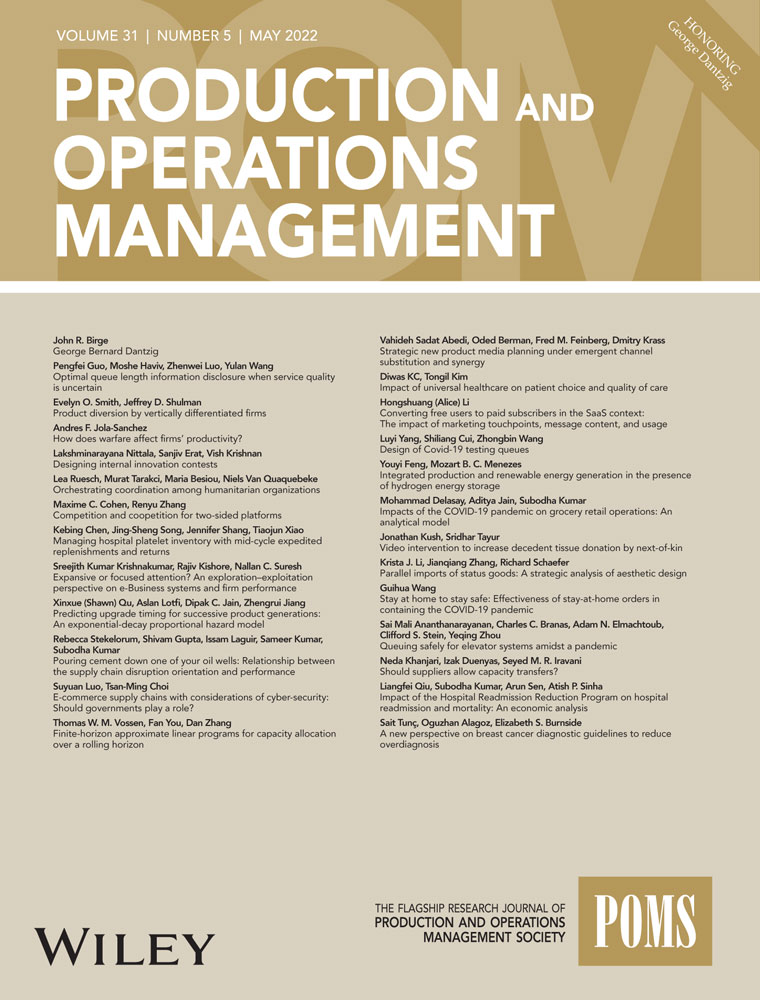Finite-horizon approximate linear programs for capacity allocation over a rolling horizon
Handling editor: Felipe Caro
Accepted by Felipe Caro, after 3 revisions.
Abstract
Approximate linear programs (ALPs) have been used extensively to approximately solve stochastic dynamic programs that suffer from the well-known curse of dimensionality. Due to canonical results establishing the optimality of stationary value functions and policies for infinite-horizon dynamic programs, the literature has largely focused on approximation architectures that are stationary over time. In a departure from this literature, we apply a nonstationary approximation architecture to an infinite-dimensional linear programming formulation of the stochastic dynamic programs. We solve the resulting problems using a finite-horizon approximation. Such finite-horizon approximations are common in the theoretical analysis of infinite-horizon linear programs, but have not been considered in the approximate linear programming literature. We illustrate the approach on a rolling-horizon capacity allocation problem using an affine approximation architecture. We obtain three main results. First, nonstationary approximations can substantially improve upper bounds on the optimal revenue. Second, the upper bounds from the finite-horizon approximation monotonically decrease as the horizon length increases, and converge to the upper bound from the infinite-horizon approximation. Finally, the improvement does not come at the expense of tractability, as the resulting ALPs admit compact representations and can be solved efficiently. The resulting approximations also produce strong heuristic policies and significantly reduce optimality gaps in numerical experiments.




